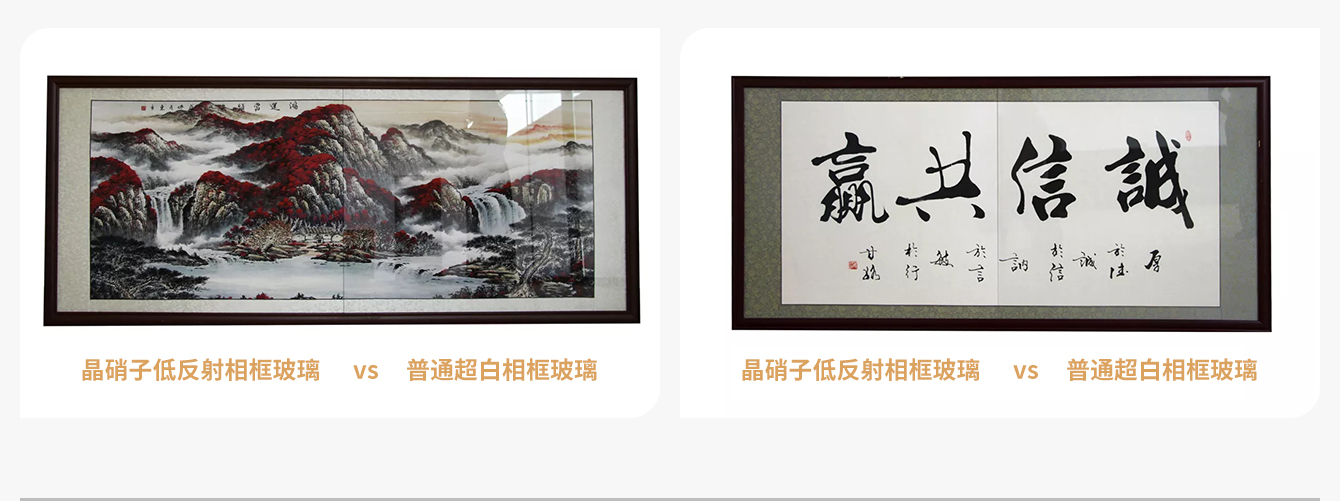Low-reflective picture frame glass plays a very important role in the display of exhibits in museums. Firstly, low-reflection glass can significantly improve the visibility and clarity of exhibits. In the museum display environment, the light is often dim, the use of low-reflective glass can enhance the brightness of the exhibits, making them more prominent and eye-catching. At the same time, low-reflective glass can also reduce the interference of reflected light on the audience's vision, improve visual comfort, and make it easier for the audience to observe and appreciate the exhibits.

Secondly, low-reflection glass can also protect exhibits from ultraviolet rays. Ultraviolet rays are destructive to many cultural relics and artifacts, while low-reflective glass can effectively block the intrusion of ultraviolet rays and prolong the life of exhibits. In addition, low-reflective glass prevents scratches and abrasions, effectively protecting the surfaces of exhibits and keeping them in pristine condition.
Low-reflective glass also has a wide range of applications in museum display facilities. For example, it can be used in protective devices such as display cabinets, display shelves, and shields to provide a safer and more stable display environment for exhibits. At the same time, low-reflective glass can also improve the overall aesthetics of the display facilities and enhance the brand image and attractiveness of the museum.
In addition to its application in museums, low-reflective picture frame glass can also be used in other venues, such as galleries, art studios, photography studios, and so on. In these venues, low-reflective glass can provide clearer and more realistic visual effects, enabling the audience to better appreciate and understand the works of art. At the same time, low-reflective glass can also prevent UV rays from harming artworks and protect them from damage.
In conclusion, low-reflection picture frame glass plays an important role in the display of museums, art galleries, and other cultural venues. It not only improves the visibility and clarity of exhibits but also protects them from the harmful effects of UV rays and mechanical damage. At the same time, low-reflective glass can also improve the overall aesthetics of the display facilities and enhance the brand image and attractiveness of the museum. In the future, with the continuous development and innovation of technology, it is believed that the application prospect of low-reflection photo frame glass will be even broader.





